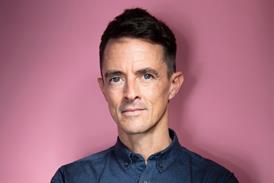The must-read stories and debate in health policy and leadership.
- Today’s Pritchard plea: NHSE chief calls for ‘consensus building’ on bill
- Today’s take on tech: Power to the ICS
The NHS received the biggest increase in its funding for 20 years yesterday. But it seemed to make few people happy.
For the NHS, as we report, the increase was only about half what the leading lobby groups wanted and came with skyscraping expectations of a 30 per cent increase in activity.
Given that the rise accounts for a 3.9 per cent real terms increase over the next three years, the government might well think this response was a little churlish. Critics would no doubt point out that nine years in which annual funding increases averaged 1.2 per cent in real terms topped off by a global pandemic creates a very big hole to fill.
The details of the announcement were particularly cruel for those in the social sector. The trails had been that the government’s “vision” for social care would finally be unveiled, along with a sustainable funding package.
Instead, as so often happens, the NHS queue jumped and swiped most of the money. In the words of the Resolution Foundation, we now live in an “NHS-dominated state” in which social care has been given a “back seat” once again.
The caps on care costs will be welcomed by some, but they do little to address the supply issues afflicting social care. Issues that will be made worse by the fact that low-paid social care workers will now have another incentive to seek alternative employment as they see their NI contributions rise.
The Johnson government has sometimes felt like The Charge of the Light Brigade, and the announcement of the “Health and Social Care levy” faced cannons on the right as well as the left.
Many Conservative MPs are enraged by the abandonment of the pledge not to raise national insurance, but the more long-lasting criticism might be the economic illiteracy (as many on the right see it) of the move.
But will the government care that splashing such a large amount of cash has won them so little support? Very probably not.
They will be looking at polling that shows spending more on the NHS is always welcomed by the public, and that governments fall when waiting lists and times get too long.
From the message on the side of that bus, through the cry of “48 new hospitals”, to a social care rescue plan that turned out to be an elective recovery fund two common threads can be discerned: the route to the voters’ hearts is signposted by a blue lozenge and as long as a number is big enough, it doesn’t really matter if it is enough.
























1 Readers' comment